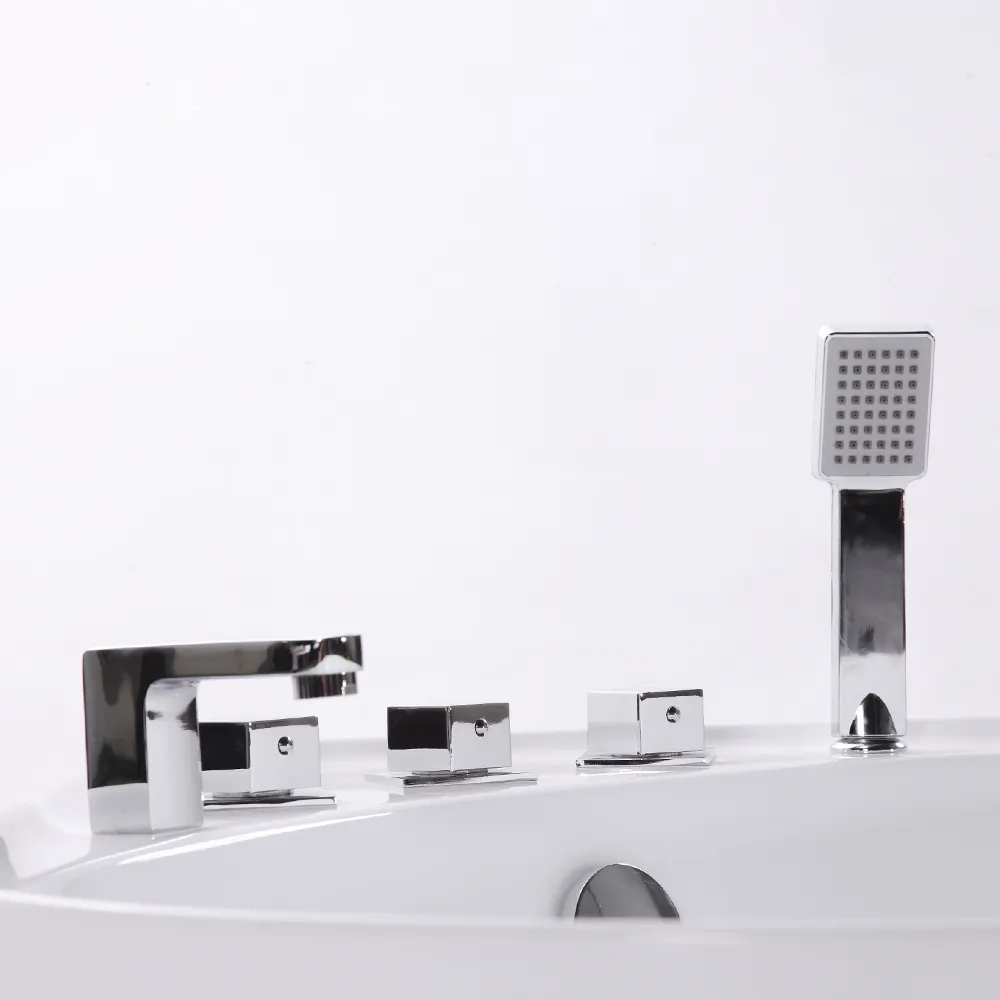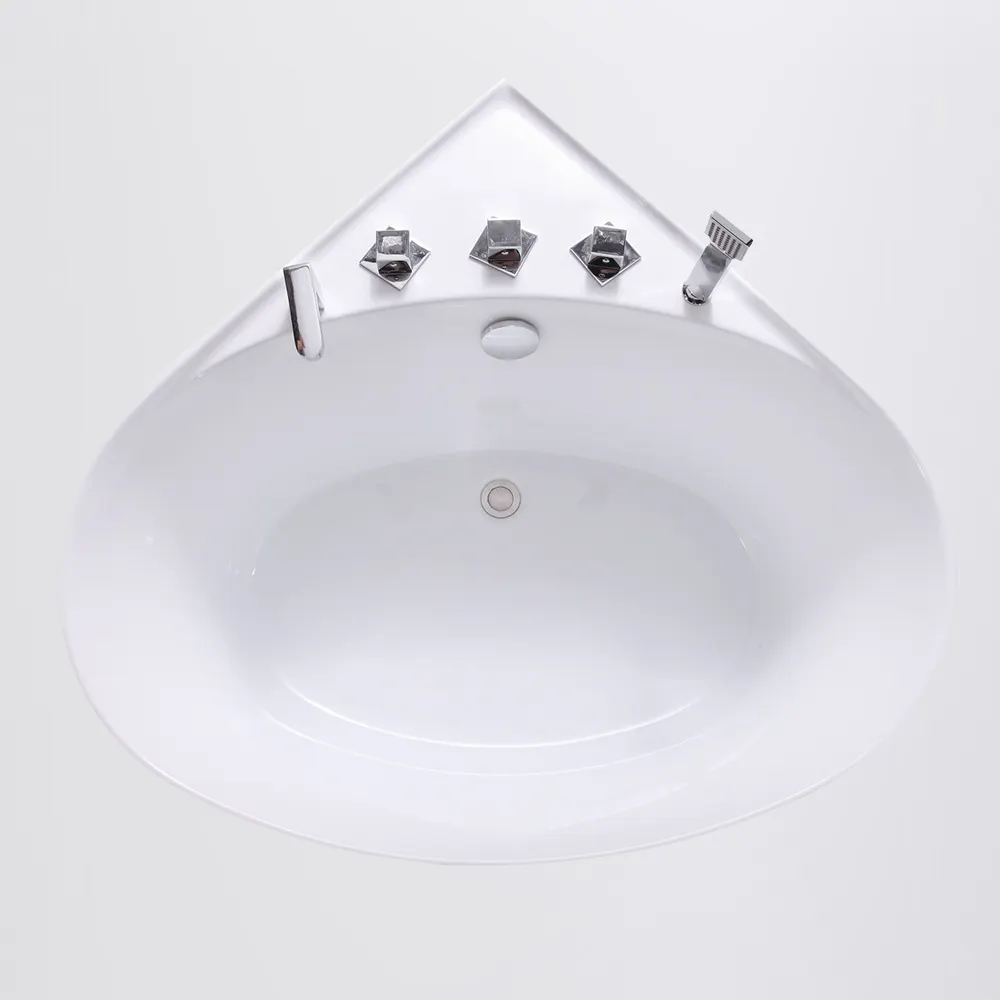Un Nuovo Standard di Lusso per il Bagno
Il design moderno del bagno non si basa più solo sulla funzionalità; si tratta di creare uno spazio che unisca comfort, stile ed espressione personale. Tra le tante scelte che i proprietari di case devono affrontare quando ristrutturano o costruiscono un bagno, la selezione della vasca giusta è una delle decisioni più importanti. La vasca freestanding vasca da bagno si è affermata come un elemento centrale del design contemporaneo, non solo per il suo appeal estetico ma anche per il suo valore funzionale. Che tu stia cercando di creare un ambiente simile a una spa o un pezzo d'arredo che definisca visivamente la stanza, una vasca da bagno freestanding offre una combinazione accattivante di forma e funzionalità.
Design Accattivante e Versatilità
Migliorare l'estetica del bagno
Una delle principali ragioni per cui i proprietari di case scelgono una vasca freestanding vasca da bagno è il suo impatto visivo. Con la sua forma scultorea e la collocazione indipendente, diventa immediatamente un punto focale in qualsiasi bagno. A differenza delle vasche da incasso, che richiedono pareti o basamenti circostanti, le opzioni freestanding si distinguono per la loro autonomia, creando un senso di apertura ed eleganza. Questa libertà di design permette una varietà di forme - da quelle ovali e rettangolari a modelli a siluro o con piedini - soddisfacendo un'ampia gamma di preferenze d'arredo.
Opzioni flessibili di posizionamento
Le vasche da bagno a terra non sono limitate dai vincoli delle pareti. Possono essere posizionate quasi ovunque nel bagno, purché siano disponibili gli scarichi adeguati. Questa flessibilità consente a progettisti e proprietari di casa di sperimentare con gli ambienti e ottimizzare lo spazio. Che siano posizionate accanto a una finestra con vista o al centro sotto un lampadario, le vasche da bagno a terra permettono un posizionamento personalizzato che valorizza l'atmosfera complessiva della stanza.
Considerazioni pratiche
Requisiti di spazio
Sebbene una vasca da bagno a terra aggiunga un fascino indiscutibile, è essenziale considerare le esigenze di spazio. Queste vasche richiedono generalmente più spazio intorno rispetto alle alternative incorporate. Assicurarsi che vi sia sufficiente spazio libero su tutti i lati è fondamentale per la manutenzione e la pulizia. In bagni di dimensioni ridotte, questo potrebbe rappresentare una sfida, ma in ambienti più ampi apre la possibilità di scelte di design audaci.
Complessità dell'installazione
L'installazione di una vasca da bagno freestanding è diversa rispetto a quella di un modello tradizionale a nicchia. Gli impianti idraulici devono essere fatti passare attraverso il pavimento e il peso della vasca, specialmente quando è piena d'acqua, richiede un sottofondo solido e ben supportato. Questi fattori possono aumentare i tempi e i costi di installazione. Tuttavia, il valore a lungo termine e l'aspetto visivo unico della vasca spesso giustificano l'investimento iniziale.
Materiale e Manutenzione
Ampia Scelta di Materiali
Le vasche da bagno freestanding sono disponibili in una varietà di materiali, ciascuno con caratteristiche specifiche. L'acrilico è leggero e trattiene bene il calore, ed è per questo motivo una scelta popolare. La ghisa è estremamente durevole e offre un'eccellente capacità di trattenere il calore, anche se è molto più pesante. La resina minerale e il rame offrono finiture e texture di lusso, ma possono richiedere una maggiore cura. La scelta del materiale influenzerà non solo l'aspetto e la sensazione al tatto della vasca freestanding, ma anche la sua durata e le esigenze di manutenzione.
Pulizia e manutenzione
La manutenzione di una vasca da bagno freestanding è generalmente semplice, soprattutto se realizzata in materiali resistenti alle macchie come l'acrilico. Tuttavia, poiché queste vasche sono esposte su tutti i lati, devono essere pulite su ogni lato, compreso il fondo, se il design include piedi rialzati. Una pulizia regolare aiuta a preservare la finitura e garantisce che la vasca rimanga uno spazio invitante per rilassarsi.
Comodità e funzionalità
Esperienza di immersione
Le vasche da bagno freestanding sono progettate pensando all'immersione. La maggior parte dei modelli offre vasche profonde che permettono all'utente di immergersi completamente, creando un'esperienza simile a quella di una spa. Che sia dopo una lunga giornata di lavoro o durante una sessione di cura personale nel fine settimana, immergersi in una vasca da bagno freestanding può offrire una sensazione di rigenerazione difficile da eguagliare con una vasca standard.
Caratteristiche ergonomiche
Molte vasche da bagno moderne e a terra sono realizzate con contorni ergonomici che sostengono la schiena e il collo. Queste scelte di design sottili migliorano il comfort e permettono di prolungare i bagni senza provare disagio. Alcuni modelli includono anche braccioli o poggiatesta integrati per un maggiore lusso.

Valore dell'investimento
Aumento del valore di rivendita della casa
Una vasca da bagno a terra può aumentare significativamente il valore di rivendita della tua casa . Indica lusso e attenzione ai dettagli, qualità che i potenziali acquirenti cercano spesso. Nei mercati immobiliari di alto livello, le case con vasche a terra nel bagno principale sono frequentemente considerate più desiderabili.
Durabilità a lungo termine
Se correttamente mantenuta, una vasca da bagno a terra può durare decenni. La costruzione robusta e l'appeal senza tempo significano che i proprietari di case non dovranno sostituirla frequentemente. Scegliere materiali di alta qualità e un'installazione professionale garantisce ulteriormente che il tuo investimento resista nel tempo.
Integrazione con lo Stile di Vita Moderno
In linea con le Tendenze Minimaliste
La vasca da bagno a terra si integra perfettamente nelle tendenze di design moderne che prediligono il minimalismo e la semplicità. Le sue linee pulite e la sua presenza scultorea supportano un'estetica priva di disordine, in sintonia con le esigenze degli attuali proprietari di case. Questo approccio minimalista spesso fa percepire il bagno come più spazioso e sereno.
Adattamento alle Funzionalità degli Smart Home
Sebbene tradizionale nel concetto, le vasche da bagno a terra vengono sempre più spesso integrate negli ambienti bagno intelligenti. Caratteristiche come il controllo della temperatura, la protezione contro gli straripamenti e persino sistemi connessi tramite app possono essere incorporate senza compromettere l'eleganza classica della vasca. Questa fusione tra antico e moderno rende la vasca da bagno a terra una scelta attuale per proprietari di casa orientati al futuro.
Domande frequenti
Quali sono i principali vantaggi di una vasca da bagno a terra?
Una vasca da bagno a terra offre appeal estetico, flessibilità di posizionamento ed un'esperienza di immersione lussuosa. Può fungere da elemento centrale del design e aumentare il valore complessivo del tuo casa .
Una vasca da bagno freestanding occupa più spazio rispetto a una vasca integrata?
Sì, le vasche da bagno freestanding richiedono generalmente più spazio intorno per accessibilità e equilibrio visivo. Questo le rende più adatte per bagni di grandi dimensioni.
Le vasche da bagno freestanding sono difficili da pulire?
Pulire una vasca da bagno freestanding è solitamente semplice, soprattutto se realizzata in materiali facili da pulire come l'acrilico. Tuttavia, sarà necessario pulire l'intera parte esterna della vasca, il che potrebbe richiedere più sforzo rispetto alle vasche integrate.
Posso installare una vasca da bagno freestanding in un bagno piccolo?
Sebbene sia possibile, i bagni piccoli possono limitare le opzioni di posizionamento e far sembrare lo spazio più affollato. Effettuare misurazioni accurate e consultare un professionista può aiutare a valutare la fattibilità.

